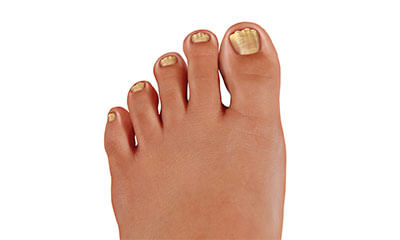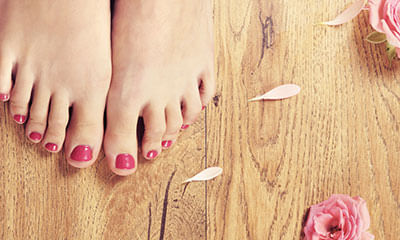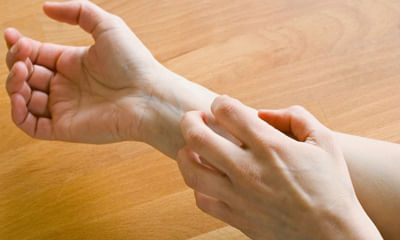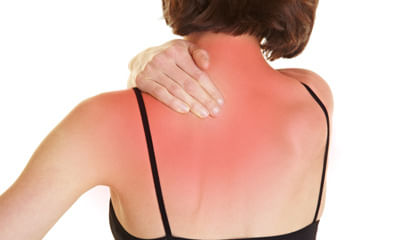How To Get Toe Nails To Grow
Hello, I have a problem in my feet toe. Nail of toe insert into skin again and again. I completely removed it 4 to 5 tim ...
Ask Free Question
You have to apply surgeon's help. When nail grow, do not clip round shape. Cut in square shape (straight tip).
Hi, I have 3 questions to ask but first the problem. So the problem is my left foot second toe nail which is the long to ...
Ask Free Question
I am sorry to hear about your concern but will be happy to assist you. A black toenail may be caused by: an underlying medical condition: this may include anemia, diabetes, heart disease, or kidney disease. Fungal infections: while these often look white or yellow, fungal infections can sometimes cause black toenails from debris buildup. Let's connect over a call so that we can discuss your concern in details and make a suitable treatment plan for you.
My mom is 54 years old and she is having her toe nail grown into the skin and is too painful. Please suggest us on the t ...
Ask Free Question
I am sorry to hear about your concern, but will be happy to assist you. An ingrown toenail happens when the corner or edge of your toenail curves and grows into the surrounding skin. This may cause pain, redness, and swelling. The condition is very common in both men and women. Your big toe is most likely to be affected. Let's connect over a call so that we can discuss your concern in details and make a suitable treatment plan for you.
My sister has been suffering from severe pain around her first toe nail from the past two weeks. The area around nail is ...
Ask Free Question
I am sorry to hear about your concern but will be happy to assist you. The main symptom of an ingrown toenail is the pain from the nail growing into the skin instead of over it. If the ingrown toenail gets infected, it might be swollen or red, and it might drain pus. The area around the ingrown toenail is often painful. Let's connect over a call so that we can discuss your concern in details and make a suitable treatment plan for you.
I had injured my toe nail around a year ago and half of the nail haf come off and half was remaining. It was really pain ...
Ask Free Question
Nail psoriasis sometimes causes too much keratin to grow under the nail. This overgrowth is called subungual hyperkeratosis. People with hyperkeratosis may notice a white, chalky substance under the nail. Let's have a detailed discussion for better advise and medication plan.
My toe nail has become yellow & fell off sometime back & again grew back, now again it is falling. It is like fungus. It ...
Ask Free Question
I am sorry to hear about your concern but will be happy to assist you. Fungi can grow between your nail bed and toenail, eventually making your toenail fall off. Symptoms of a fungal toenail infection include: noticeably thicker toenails. White or yellowish-brown discoloration on your toenails. Let's connect over a call so that we can discuss your concern in details and make a suitable treatment plan for you.
In growth toe nail cut required at left toe edge very small pain needs to be cut with local anaesthetic advice which doc ...
Ask Free Question
It will grow again will keep causing problems. Take proper Homoeopathic treatment. You can consult me at lybrate. Till then start with Silicea 30
Hi there my toenail is not infected or bleeding or painful or discoloured but it is really thick and there is a lot of c ...
Ask Free Question
Your toe nail growth affected. A lot of chalky substance under it. A bit of skin has grown next to it.Very good treatment is available in homoeopathy for your problem. No side effects. For prescription and treatment, consult me through “lybrate text consult”.
Nails on my both the toes are growing in a curve and have started entering and piercing the skin. The pain is gradually ...
Ask Free Question
Ingrown toenail happens when the edges or corners of the nail grow into the skin next to the nail and break the skin. It is a common condition, and it can be painful, causing swelling, redness, and sometimes infection. It usually affects the big toe, either on one or both sides of the toe. Let's have a detailed discussion for better advice and medication plan.
Suffering with ringworm near public area and buttocks since 6 months, can you help me pls. ...
Ask Free Question
Introduction: ringworm is a fungal infections that are on the skin. Some of these fungal infections produce round spots on the skin, but many do not. The medical term for ringworm is tinea. Dermatophytes are the fungi cause bjuiusing ringworm hence also known as dermatophytosis. It appears in various forms of cutaneous infection. The names are given according to the site affected. The degree of inflammation depends on the causative fungus and host immunity. It may transmit from soil, animal or from human to human. causes /etiology: ringworm is a contagious fungal infection caused by mold-like parasites that live on the cells in the outer layer of your skin. It can be spread in the following ways: human to human: ringworm often spreads by direct, skin-to-skin contact with an infected person. animal to human: you can contract ringworm by touching an animal with ringworm. Ringworm can spread while petting or grooming dogs or cats. It's also fairly common in cows. object to human: ringworm can spread by contact with objects or surfaces that an infected person or animal has recently touched or rubbed against, such as clothing, towels, bedding and linens, combs, and brushes. soil to human: in rare cases, ringworm can be spread to humans by contact with infected soil. Infection would most likely occur only from prolonged contact with highly infected soil. risk factors: you're at higher risk of ringworm of the body if you: live in a warm climate have close contact with an infected person or animal share clothing, bedding or towels with someone who has a fungal infection participate in sports that feature skin-to-skin contact, such as wrestling wear tight or restrictive clothing have a weakened immune system. ð complications: a fungal infection rarely spreads below the surface of the skin to cause serious illness. But people with weak immune systems, such as those with hiv/aids, may find it difficult to get rid of the infection. types: tinea barbae: ringworm of the bearded area of the face and neck, with swelling and marked crusting, often with itching, sometimes causes the hair to break off. "barber's itch" tinea capitis: ringworm of the scalp commonly affects children, mostly in late childhood or adolescence. This condition may spread in schools. Tinea capitis appears as scalp scaling that is associated with bald spots. tinea corporis: ringworm the skin of the body, it often produces the round spots of classic ringworm. Sometimes, these spots have an "active" outer border as they slowly grow and advance. tinea cruris: ringworm of the groin or "jock itch" tends to have a reddish-brown color and to extend from the folds of the groin down onto one or both thighs. tinea faciei: ringworm on the face except in the area of the beard. On the face, ringworm is rarely ring-shaped. Causes red, scaly patches with indistinct edges. tinea manus: ringworm involving the hands, particularly the palms and the spaces between the fingers. Causes thickening (hyperkeratosis) of these areas, often on only one hand. tinea pedis: ringworm called "athlete's foot" may cause scaling and inflammation in the toe webs, especially the one between the fourth and fifth toes. Thickening or scaling of the skin on the heels and soles. Causes blisters between the toes or on the sole. Extremely common skin disorder. It is the most common and perhaps the most persistent of the fungal (tinea) infections. It is rare before adolescence. Can occur in association with other fungal skin infections such as tinea cruris tinea unguium: ringworm of the fingernails and, more often, the toenails yellow, thick, and crumbly. This is referred to as fungal nails or onychomycosis symptoms: â»reddish, scaly or white patches on the skin. â»the lesions may appear raised and blistered. the circular lesion might have a clearing in the center. hair loss is common side effect of this disease. ringworm of scalp especially is characterized by patchy hair loss where the hair might be bent and broken at an odd angle. homeopathic remedies by location of the ringworm: tinea in general body arsenicum album bacillinum chrysar. Natrum mur phytolacca sepia tellurium thuja tuberculinum tinea barbae (beard) bacillinum calc carb cicuta graphites kali bich nitric acid platina staphysagria sulphur thuja tinea capitis (head) calc carb dulcamara phyto sepia mezerum psorinum tellurium tinea on face graphites natrum carb natrum mur sepia tellurium thuja tuberculinum tinea versicolor natrum ars. Sepia thuja so it's better to consult a doctor and take proper treatment.




